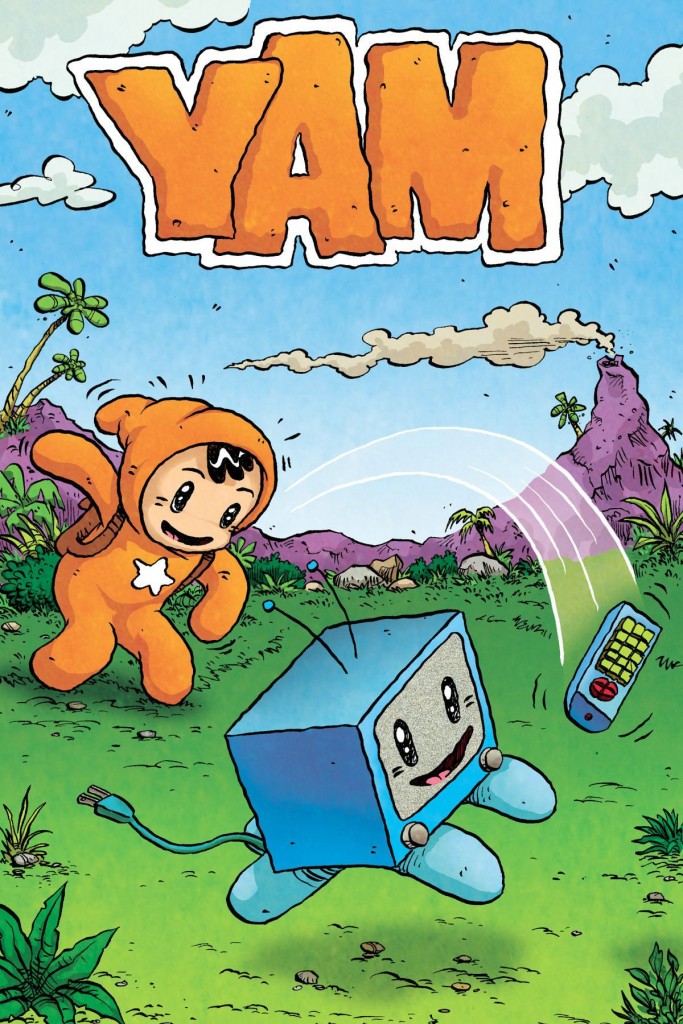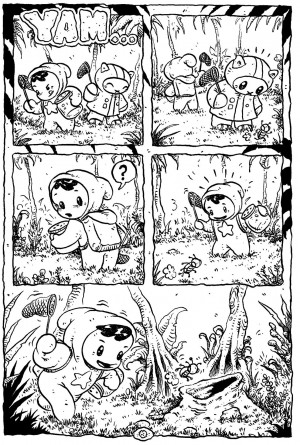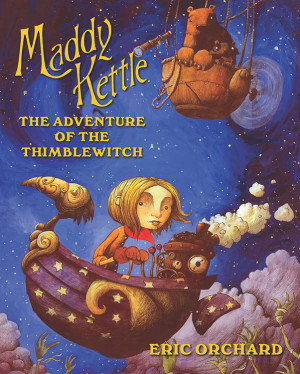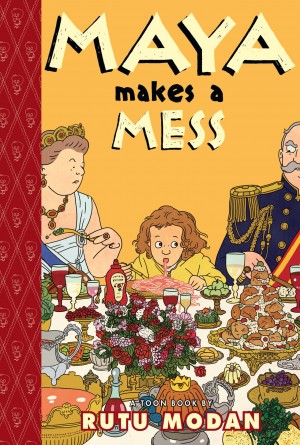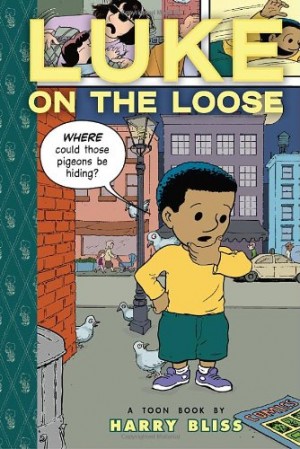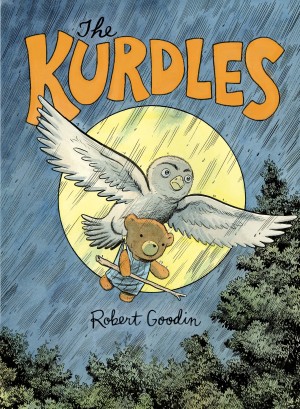Review by Ian Keogh
As defined by different artistic approaches and a definite progression, Yam collects strips produced by Corey Barba over a significant period, many of which first appeared in Nickelodeon Magazine. With the exception of the extended feature concluding the book, they’re generally very brief, often surreal, all wordless and some are in colour and others black and white. They can be so sketchy that not even the panel borders are straight, or extensively detailed as per the sample page.
Yam’s an interesting collection posing a fair amount of questions for a children’s graphic novel. While presumably based on an infant’s understanding of the phrase ‘I am’, unless you’ve read the back cover blurb it’s never clear, for instance, if Yam is the name of Barba’s character or the world they inhabit. To begin with it’s a gender neutral young child in their onesie, and this lack of certainty is a good thing for the children at whom the book is aimed. They often make snap and irrevocable decisions about stories on the basis of whether the protagonist is male or female, and by the time they learn they’ll have been seduced by the content.
There’s something of Jim Woodring’s hallucinogenic and dreamlike material about the world of Yam, but the surrealism is of a far less disturbing variety. Generally that is. Wedding cakes can fall in love with cup cakes and televisions can be companions that require nurturing, but there’s one disturbing colour strip with a toilet tortoise. Barba’s imagination is expansive, and attuned to wonder, and this seeps through in the incidental elements added to the more detailed pages.
The children at whom the book is aimed won’t care, but casting a more critical eye over the content does reveal flaws. Some of the strips earlier in the book, have the look of sketchbook roughs included as such without being developed. Yes, there’s a spontaneity, but some finishing would be appreciated. There are also moments when Barba runs into difficulties with his wordless system. Pictograms work fine in some cases, but others remain oblique. At first it’s unclear just what is our hero is doing with the sales assistant in the toy shop, for instance, although later events clarify this. That’s part of the longest strip in which it’s definitively revealed our protagonist is male, and he goes into flights of fancy about the sales assistant, who’s considerably older. It’s an odd subject in conjunction with the remainder of the book, following fairy tale traditions by introducing a rival, and then taking a turn away from predictability.
Barba’s cartooning is wonderful, charming and wholesome, but there’s a lack of focus to his stories meaning children will find it far easier to absorb themselves in his world than adults.
